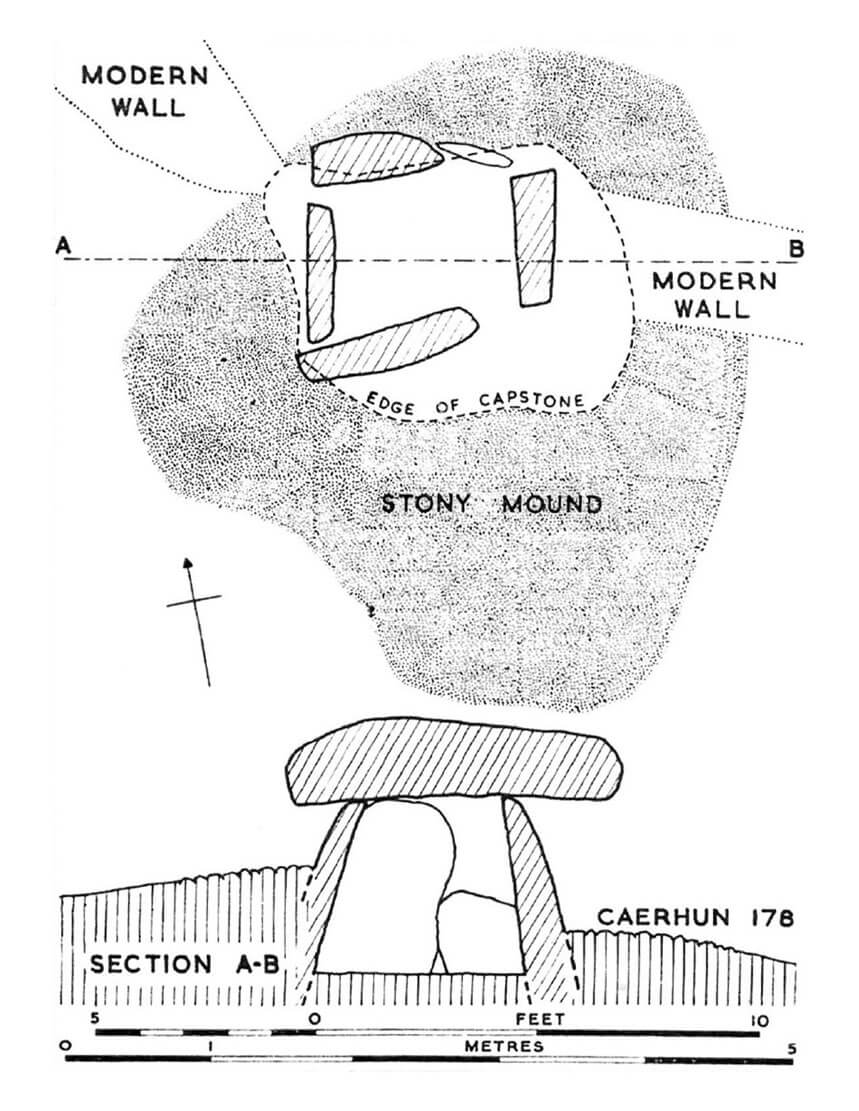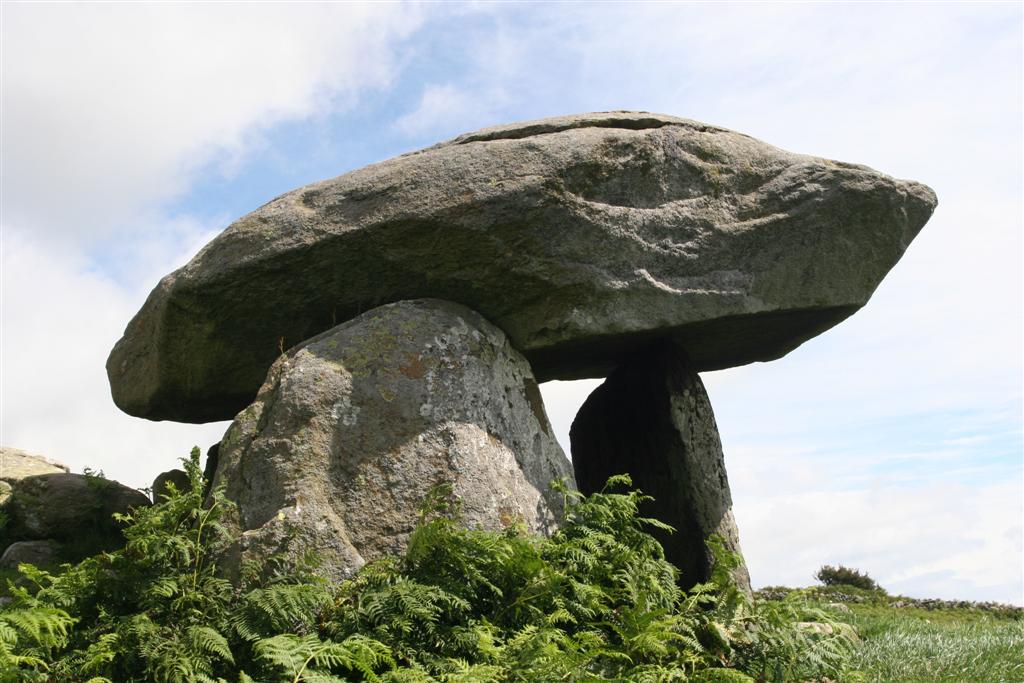History
The tomb, whose Celtic name Maen y Bardd means Bard’s Stone, was built around 3500 BC on the southern slope of Tal y Fan. In its vicinity there are several standing stones and relics of round huts and fences, which indicate that these areas were intensively settled and used during the Neolithic period. This area has remained meaningful also in the Roman period, when the road from Caernarfon to the fort Canovium in Caerhun was built.
Architecture
The rectangular burial chamber consisted of four stones arranged vertically with longer sides, on which a fifth large capstone was placed, acting as a ceiling, with an impressive dimensions of 4×2 meters and 0.7 meters in thickness. The height of the burial chamber was about 1.2 meters, so it was possible to enter it only on all fours or on a strong tilt. For this purpose, a 1.1 meter long and 1.2 meter wide slit in the south-eastern part of the chamber could be used. The whole chamber was probably covered with a stone or earthen mound (cairn), but a small number of its traces and dragging small stones over a large area currently make it impossible to restore its original shape.
Current state
The dolmen which used to form a burial chamber have survived to the present day from the prehistoric tomb, while the surrounding mound (cairn) has been almost completely dispersed. Admission to the monument is free, but it is located away from major urban centers, on the northern side of the local road from Rowen.
bibliography:
Castleden R., Neolithic Britain: New Stone Age sites of England, Scotland and Wales, London 1992.
The Royal Commission on The Ancient and Historical Monuments and Constructions in Wales and Monmouthshire. An Inventory of the Ancient and Historical Monuments in Caernarvonshire, volume I: east, the Cantref of Arllechwedd and the Commote of Creuddyn, London 1956.


